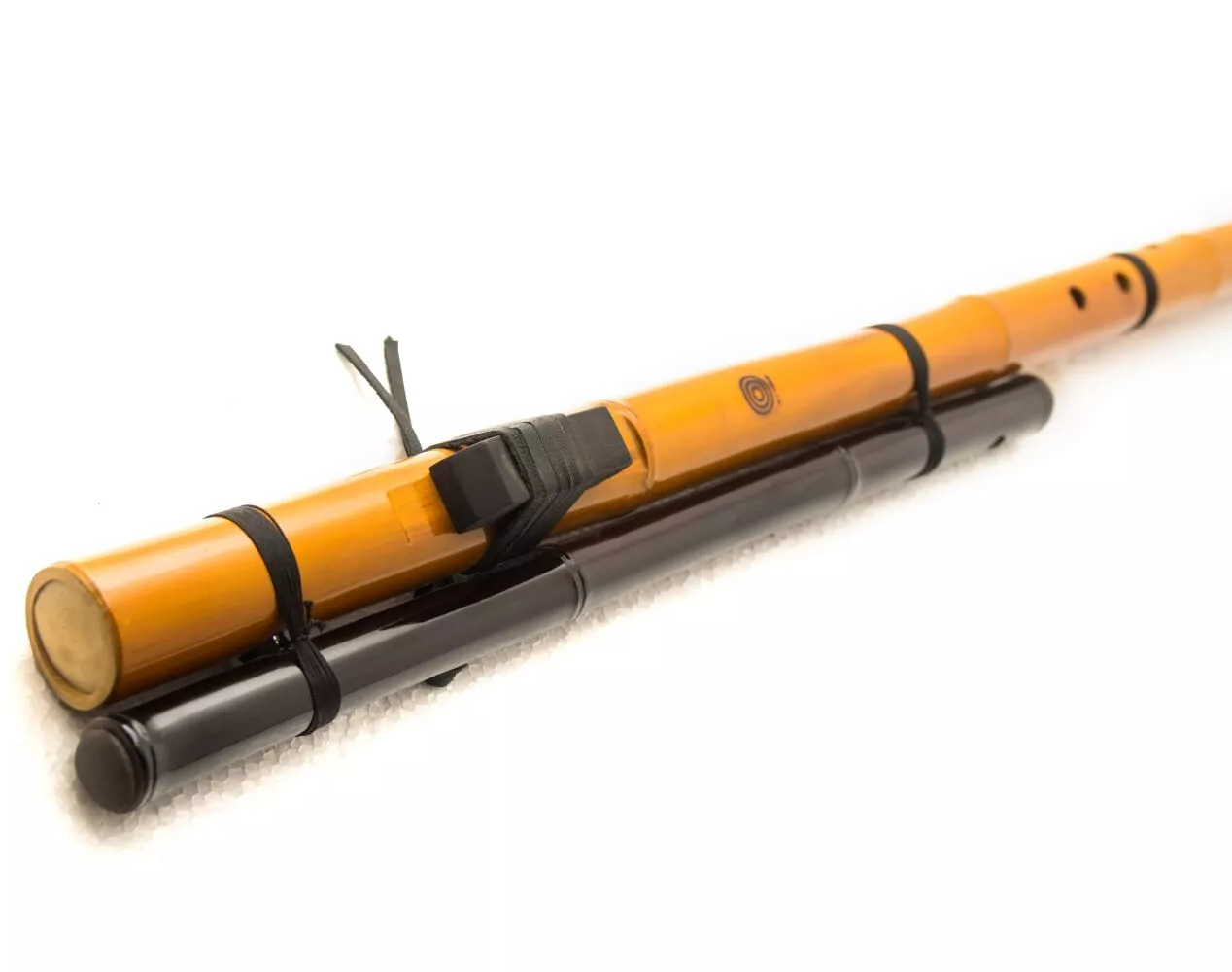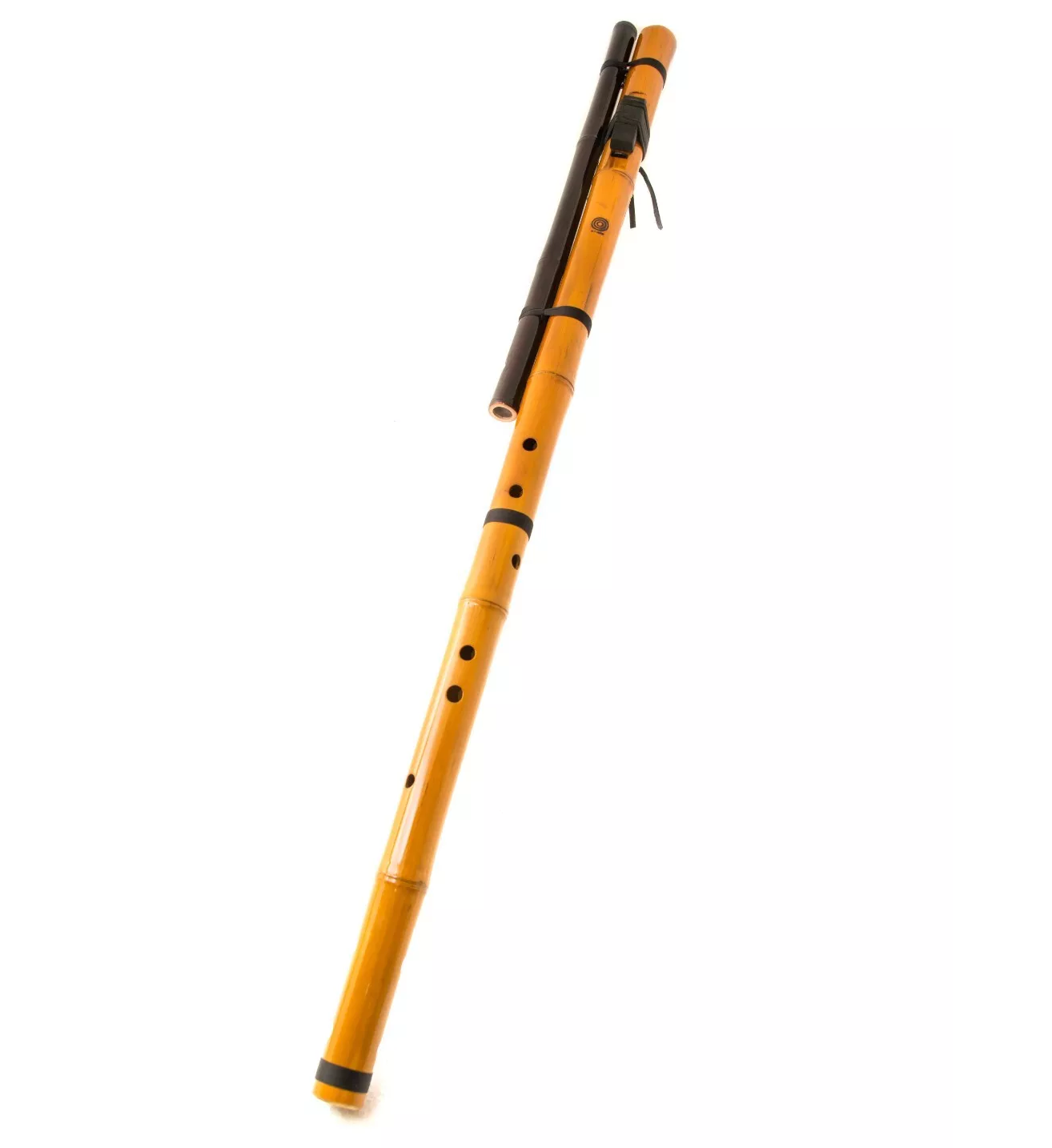Moceno
Woodwinds
America
Between 1001 and 1900 AD
Video
The Moceno is a traditional wind instrument known for its deep, resonant tones. It is a type of flute native to the Andean regions, particularly associated with Bolivia. The instrument is characterized by its unique design, which includes an external air duct that directs airflow to the sound-producing edge, distinguishing it from other traditional flutes. The Moceno is commonly played in indigenous and folk music, often accompanying dances and ceremonies.
It belongs to the aerophone family, a category of musical instruments in which sound is produced by the vibration of air. More specifically, it is a duct flute, similar to the recorder, but with a larger and more cylindrical structure. The Moceno is classified as an end-blown flute since the musician directs air into the instrument through an external air duct rather than blowing across an open hole.
History
The Moceno has its origins in South America, specifically within the Andean regions of Bolivia. Its historical roots can be traced back to pre-Columbian times, dating as far back as the 15th century when indigenous communities used it as part of their musical traditions. The instrument has remained an essential component of Andean music over centuries, with influences from both indigenous and Spanish colonial cultures shaping its development.
Types of Moceno
The Moceno comes in different sizes, each producing a distinct pitch and tone. The primary types include:
Small Moceno – Produces higher-pitched tones and is often used in ensemble settings to complement larger versions.
Medium Moceno – Offers a balance between deep and high tones and is commonly used for solo performances.
Large Moceno – Produces deep, bass-like tones and serves as the foundational instrument in traditional Andean music ensembles. Each type plays a unique role in creating the layered, harmonious sound typical of Bolivian and Andean music.
Characteristics
The Moceno is known for its large size compared to other flutes, which contributes to its deep, rich sound. Some key characteristics include:
Cylindrical shape – Made from bamboo or wood, providing natural acoustics.
External air duct – Unlike traditional flutes, it features an external mechanism for directing airflow.
Deep, resonant sound – Produces a unique, mellow tone that is often described as haunting or meditative.
Finger holes – Typically includes six or more finger holes, allowing for varied pitch and melodic expression.
Traditionally, the Moceno is made from bamboo or cane, which provides its hollow, cylindrical shape. The use of bamboo allows for a natural resonance that enhances its deep, warm tones. Some modern variations of the instrument incorporate wood or other durable materials, but the traditional bamboo construction remains the most common. In addition to the primary material, the instrument often features bindings made of fiber or leather to reinforce its structure and prevent cracking.
Sound Production
Sound in the Moceno is produced by directing air through the external air duct, which channels it toward the sharp edge at the top of the flute. This mechanism creates vibrations within the tube, generating sound. The pitch and tone are controlled by covering or uncovering the instrument’s finger holes, which alters the length of the vibrating air column. The size of the Moceno also plays a crucial role in its tonal qualities, with larger versions producing deeper, bass-like notes and smaller ones yielding sharper, higher pitches.
Playing Methods
Playing the Moceno requires skillful breath control and precise finger positioning. The musician holds the instrument vertically and blows air into the external duct while using their fingers to manipulate the pitch. Some playing techniques include:
Regular blowing – A steady stream of air is blown into the duct to produce a continuous tone.
Articulation – Tonguing techniques are used to create staccato or legato effects.
Vibrato – By varying breath pressure, players can add a vibrato effect to enhance the sound’s expressiveness.
Overblowing – Allows players to access harmonics or higher-pitched notes beyond the natural scale. Traditional players often use the instrument in ensemble settings, where multiple Mocenos of different sizes are played together to create a layered, harmonious effect.
Roles in Music
The Moceno plays an essential role in Andean and Bolivian folk music, where it is often used in traditional festivals, dances, and ceremonial events. Some of its primary musical roles include:
Melodic Lead – In smaller ensembles, the Moceno often carries the main melody.
Harmonic Support – In larger ensembles, different Mocenos are played together to produce harmonic textures.
Rhythmic Accompaniment – The instrument’s deep, resonant tones contribute to the rhythmic structure of Andean music.
Solo Instrument – The Moceno is sometimes played as a solo instrument in meditative or ritualistic music. The instrument is often accompanied by percussion instruments, such as the bombo drum, and string instruments like the charango or guitar.
Cultural Significance
The Moceno is deeply embedded in Andean culture and traditions. It is frequently used in ceremonies and festivals that celebrate indigenous heritage, such as the Fiesta de San Juan and the Oruro Carnival. The instrument is particularly associated with indigenous Aymara and Quechua communities, where it is considered a symbol of ancestral heritage and spiritual connection. Some cultural aspects include:
Ritual Significance – The Moceno is played during agricultural and spiritual ceremonies to invoke blessings or honor deities.
Community Bonding – The instrument fosters unity among musicians and dancers in traditional performances.
Preservation of Heritage – Despite modern influences, the Moceno continues to be a vital part of Andean identity, with efforts to preserve its traditional craftsmanship and playing techniques. As global interest in indigenous music grows, the Moceno has also gained recognition beyond the Andes, being featured in world music ensembles and fusion projects that blend traditional Andean sounds with contemporary styles.
The Moceno is a fascinating and culturally significant instrument that has withstood the test of time. Its deep, evocative sound and rich history make it an indispensable part of Andean musical traditions. Through its various types, playing methods, and cultural roles, the Moceno continues to captivate musicians and audiences worldwide, preserving the legacy of indigenous Andean music for future generations.
FAQ
What is the Moceno musical instrument?
The Moceno is a traditional Andean flute, primarily used in Bolivian music. It is an end-blown bamboo flute with a distinctive buzzing membrane. The instrument produces deep, resonant tones, often played in ensembles. Mocenos are commonly used in indigenous festivals and rituals.
How is the Moceno flute played?
The Moceno is played by blowing air through its open end while covering and uncovering holes to change pitch. The buzzing membrane adds a unique timbre to the sound. Typically, players use circular breathing for continuous melodies. It is often played in pairs to create harmonized melodies.
What materials are used to make the Moceno?
The Moceno is traditionally made from bamboo, which provides its warm and resonant tone. A thin membrane, usually made from plant fiber or animal skin, is placed over a hole for its buzzing effect. Some versions use decorative carvings or paint. Modern adaptations may incorporate synthetic materials.
 Links
Links
References
Other Instrument
Categories



















